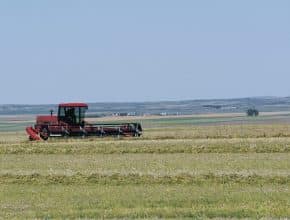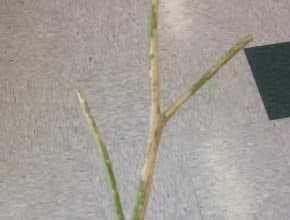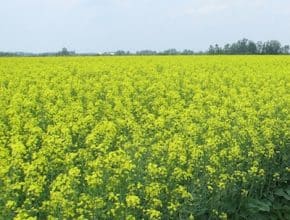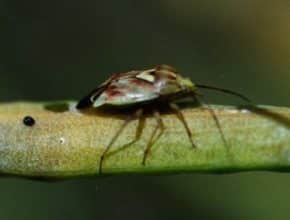Home / Canola Watch / July 29, 2015 - Issue 19
-
Four questions to test your knowledge on pre-harvest intervals…
-
The swath timing decision becomes more difficult in crops with plants at multiple stages of growth. Here are some tips to help with the swath decision on these fields…
-
Diamondback moth larvae and grasshoppers have been reported, but so far nothing of widespread significance. The photo shows what grasshoppers can do to a canola plant, but their damage is usually isolated to small patches. Bertha armyworm adult traps are coming down with very little in the way of hotspots…
-
Improved moisture in some regions has extended flowering. Some fields have been at “full flower” for what seems like weeks. Highly variable crops may also be at full flower or their “most yellow” — other terms for 50% flower — for longer than typically expected. This does extend the sclerotinia stem rot risk. But that "risk" may still not be…
-
When it comes to maintaining Canada’s reputation as a high quality canola supplier, everyone in the canola value chain has an important role to play…
-
Threshold tables for lygus suggest, for example, that if canola is $12 per bushel and spray costs $8 per acre, the threshold at the early pod stage is 5 lygus adults or late instar nymphs per 10 sweeps. Current thinking is that 5 lygus per 10 sweeps (0.5 per sweep) is too few to warrant a spray, and that the…
-
Glyphosate is registered for pre-harvest perennial weed control in canola. Glyphosate is to be applied when the majority of seeds are yellow to brown in colour and seed moisture is less than 30%. Heat fits between glyphosate and Reglone on the speed of dry down spectrum. Reglone is a contact herbicide (only kills what it contacts) and is registered in…




